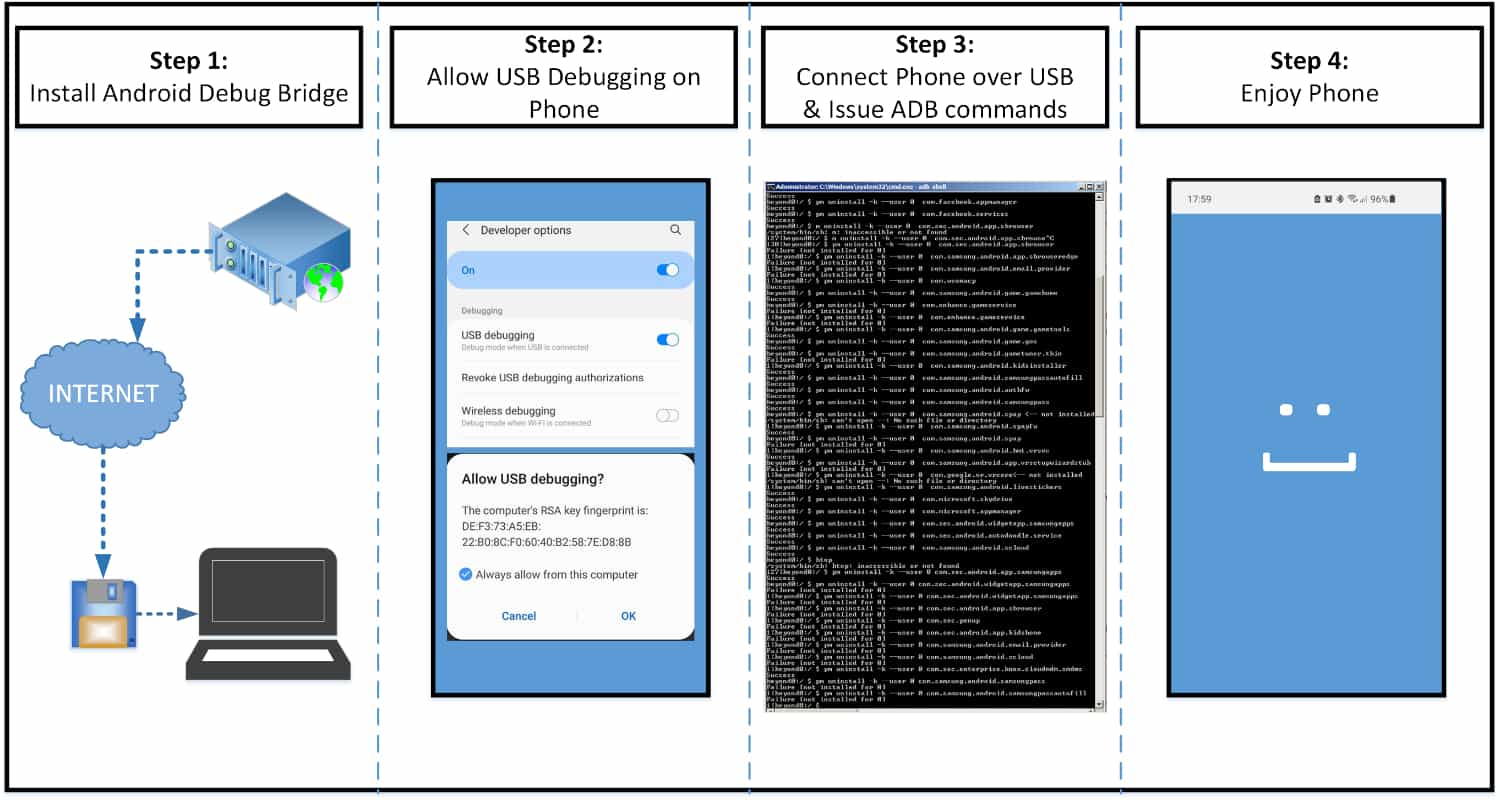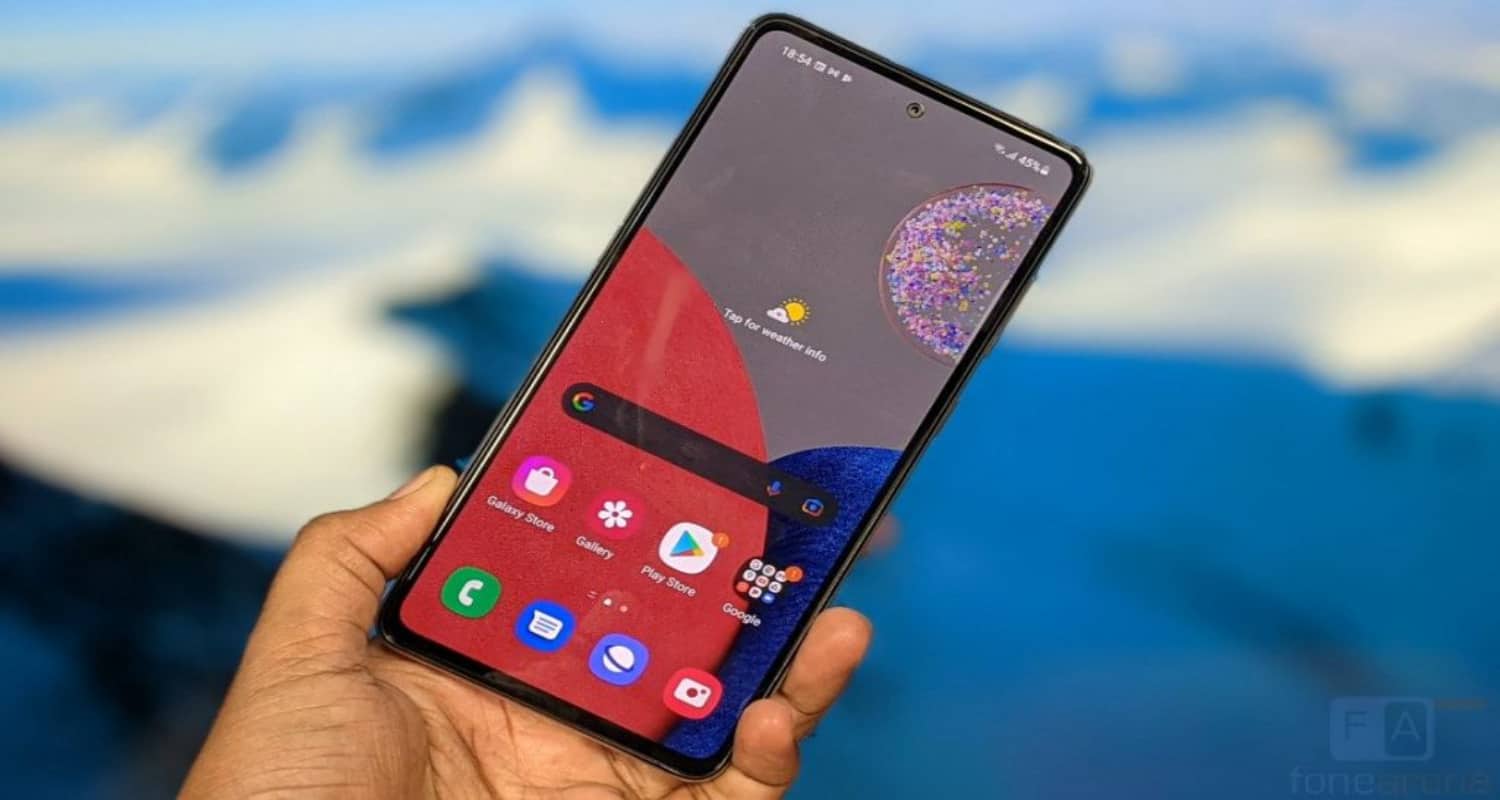
In the ever-evolving world of Android, one silent predator often goes unnoticed until it strikes – the mysterious ‘app space’. Picture this: you’re about to download the latest, trendiest app everyone’s talking about. You hit ‘Install’, and there it is, the dreaded pop-up: “Insufficient storage space.” Frustrating, isn’t it? This scenario is all too familiar for Android users, and it’s not just about the inconvenience. It’s a puzzle that affects the very functionality of your device, slowing it down, and turning your seamless digital experience into a sluggish ordeal.
What is Android App Space? Android app space refers to the storage consumed by applications on an Android device, encompassing the app’s APK file, extracted data, and additional files like databases and cached images.
Now, imagine having the power to master this space, to make informed decisions about which apps to keep, which to let go, and how to ensure your device runs smoothly. That’s exactly what we’re diving into. Let’s unravel the mystery of Android app space, decode its complexities, and reclaim control over our devices. Ready to become the master of your Android’s universe? Let’s get started.
See Also: What is a Jailbroken Android TV Box? Unleashing Entertainment
Understanding Android App Packaging
The Anatomy of an APK File
Let’s dive into the world of Android app packaging, starting with the heart of the matter: the APK file. APK, standing for Android Package, is essentially the box that contains all the goodies of an Android app. Think of it like a zip file, a compressed package holding everything the app needs to run smoothly on your device. It’s not just the app’s code, but also its resources, assets, and manifest file – the blueprint that tells your device what the app is and what it needs to function.
Moreover, when delving into the technicalities of app packaging, one might come across specific system processes, like “used com.samsung.android.app.spage.” This particular process is often noticed by Samsung Android device users in their system settings. It’s a part of Samsung’s Android implementation, playing a role in managing app-related functionalities and space. Understanding such specific components is crucial for both developers aiming to optimize their apps for Samsung devices and users trying to navigate their device’s storage system.
Unpacking the Mystery: How APK Expands
When you download an app, what you’re getting is this neatly packed APK file. But here’s where it gets interesting. Once you hit that install button, the APK file starts to unpack. This process is like moving into a new house; the contents of the neatly packed boxes (the APK file) are spread out to set up shop in your device’s storage.
This unpacking is necessary for the app to function, but it also means that the app’s size expands, often significantly. It’s not just about the space the APK file itself takes up; it’s about all the additional space needed once it’s unpacked.
The Expansion Explained
Why does this expansion happen? Well, the APK file contains compressed versions of the app’s components. When these components are extracted and decompressed, they take up more space than they did in the compressed APK file. It’s like taking a deflated balloon (the compressed APK) and inflating it (the installation process) – it’s going to take up more room.
Moreover, the app might create additional files necessary for its operation, such as databases or cached data. These files are not part of the original APK but are generated as the app is used. This is akin to accumulating belongings in your new house over time – the longer you live there, the more space your stuff takes up.
A Closer Look at Storage Consumption
So, when you’re looking at the size of an app in the Google Play Store, remember that’s the size of the APK file, not the total space the app will occupy once installed. This distinction is crucial for understanding and managing your device’s storage effectively.
In summary, the expansion of app storage post-installation is a natural part of the Android experience. By understanding this process, you become better equipped to manage your device’s precious storage space and keep your digital life running smoothly.
See Also: SecVideoEngineService on Android: What Is It and How It Works
Factors Affecting App Space Consumption
Navigating the digital landscape of your Android device can sometimes feel like a game of Tetris, where every app is a block eating up your precious space. But what exactly makes these blocks – or apps – vary so much in size? Let’s dissect the key factors that bloat your app space, turning your sleek device into a digital storage war zone.
The Role of Android Databases
First up, let’s talk about databases. Many apps use databases to store data – everything from your high scores in games to your shopping lists. Android apps often rely on SQLite, a lightweight database system that’s powerful yet compact. However, ‘compact’ can be misleading. As you use an app, the data stored in these databases grows. Imagine a diary that starts out empty but gets filled with entries over time; similarly, the SQLite database expands as more data accumulates.
The Expansion of SQLite Databases
Why does this matter? Because this expansion is often overlooked when considering app space. Each app’s database starts small but can grow to several megabytes or even gigabytes, depending on how much data you’re storing. It’s like a closet that starts out organized but becomes cluttered over time as you keep adding stuff.
Backup of APK Files and Extracted Components
Next, let’s unravel the mystery of APK backups. When you install an app, Android doesn’t just toss the APK file aside. Instead, it often keeps a backup of the APK file along with the extracted components. This is like keeping both the flat-pack furniture box and the assembled furniture – it doubles the space taken up. This redundancy might seem unnecessary, but it’s there for a reason, like ensuring that you can reinstall the app without downloading it again.
The MIPMAP Conundrum
Now, onto the visually appealing yet space-consuming world of MIPMAP directories. These directories are a collection of image files, each a different resolution of the same image. Why? To ensure the app looks good on any device, whether it’s a high-resolution tablet or a lower-resolution phone. It’s like having different sizes of the same poster, so it fits perfectly wherever you put it. However, this means more files and, consequently, more space consumed.
Image Resolutions and Their Impact
The impact of image resolutions on app space can’t be understated. High-resolution images look stunning but take up more space. It’s a trade-off between aesthetic appeal and storage efficiency. Developers face the challenge of balancing these aspects to deliver visually appealing apps that don’t hog all your space.
The Cumulative Effect
Each of these factors might seem small in isolation, but together, they can significantly impact the app’s total size. It’s not just one book that fills up a library; it’s the accumulation of many books. Similarly, the combination of database expansion, backup files, and image resolutions collectively bloats the app space.
In conclusion, understanding these factors is key to managing your device’s storage effectively. By knowing what lurks behind the scenes, you can make more informed decisions about which apps to keep and which to let go, ensuring your Android device remains a lean, mean, digital machine.
See Also: MapleStory: How to Get an Android Companion – A Player’s Guide
Managing App Space on Android Devices
In the digital age, where our smartphones are akin to a digital Swiss Army knife, managing app space on Android devices becomes crucial. It’s not just about decluttering; it’s about optimizing performance and ensuring your device remains a reliable sidekick in your daily adventures. Let’s explore some savvy strategies and tools that Android offers to keep your digital space in check.
The Art of App Hygiene
First and foremost, regular app hygiene is key. This means routinely checking which apps you actually use and bidding farewell to the ones gathering digital dust. It’s like a wardrobe clean-out; you need to decide what stays and what goes. Android makes this easy with its built-in settings that show you how much space each app is using. This insight allows you to make informed decisions about which apps are worth the space they occupy.
Utilizing Android’s Built-in Tools
Android comes equipped with various built-in tools for managing app space. The ‘Storage’ section in your device settings is your command center for this task. Here, you can see a breakdown of how space is being used – from apps to photos to system files. It’s like having a detailed map of where every byte in your device is going.
The Magic of Cache Cleaning
Another effective strategy is clearing the cache of apps. Cache files are temporary data stored by apps to improve performance. However, over time, these files can accumulate and take up unnecessary space. Think of it as clearing out old, no longer needed notes and handouts from your study desk. Android allows you to clear these cache files either individually for each app or all at once, freeing up space without affecting your personal data.
Offloading Apps: A Temporary Goodbye
For apps you use infrequently but aren’t ready to delete, Android offers the ‘Offload’ feature. This nifty tool removes the app but keeps its data, so when you reinstall the app, it’s like you never left. It’s perfect for those ‘just in case’ apps you use once in a blue moon.
Leveraging Cloud Services
Lastly, leveraging cloud services for storage can be a game-changer. Services like Google Drive or Google Photos allow you to store your files and photos in the cloud, freeing up physical space on your device. It’s akin to renting a storage unit for your less frequently used belongings, keeping your home (or in this case, your device) clutter-free.
In summary, managing app space on Android devices is a blend of regular maintenance, utilizing built-in tools, and smart use of cloud services. By adopting these strategies, you can ensure your Android device remains efficient, responsive, and ready to tackle your digital needs.
See Also: How To View Blocked Telegram Channels On Android?
Challenges with App Space in Android
In the realm of Samsung Android devices, users might encounter unique features like the “samsung android app spage.” This specific feature is part of Samsung’s approach to managing app space and device performance. Understanding these manufacturer-specific functionalities is crucial, as they can significantly impact how app space is managed and how the device performs overall. For instance, the ‘spage’ feature might influence how apps are displayed or interacted with on Samsung devices, presenting a unique set of challenges and considerations for users.
The Perpetual Juggle of Storage Space
One of the most common issues faced by Android users is the perpetual juggle of storage space. It’s like playing a never-ending game of digital Tetris, where you’re constantly trying to fit new apps into the limited space of your device. This struggle becomes particularly acute with devices that have limited internal storage and no option for external expansion. Users often find themselves in a cycle of uninstalling and reinstalling apps, trying to make room for updates or new downloads.
The Impact on Device Performance
But why is app space such a big deal? The answer lies in how it affects device performance. When your Android device is low on space, it’s not just about not being able to install new apps; it’s about the overall health of your device. A cramped storage space can lead to slower app performance, longer load times, and in extreme cases, system crashes. It’s akin to trying to work in a cluttered room; the chaos around you inevitably affects your efficiency.
The Update Dilemma
Another challenge is the update dilemma. App developers continuously roll out updates to improve functionality and security. However, each update often adds to the app’s size. For users with limited space, this can create a catch-22 situation: forego updates and miss out on new features and security patches, or update and sacrifice precious space. It’s a digital tug-of-war, with users often caught in the middle.
The Hidden Occupants: Cache and Data Files
Moreover, it’s not just the apps themselves that consume space; it’s also the data they accumulate over time. Cache files, downloaded data, and user-generated content within apps can balloon an app’s footprint without the user even realizing it. It’s like the hidden layers of items in a closet that you forgot you had, taking up more space than you thought.
The Strain on User Experience
Finally, the strain on user experience cannot be understated. Constantly managing app space can be a source of frustration, turning what should be a seamless digital experience into a chore. It’s like having to constantly rearrange furniture in a small room to make it livable.
In conclusion, the challenges with app space in Android are multifaceted, affecting everything from device performance to user experience. By understanding these challenges, users can take proactive steps to mitigate them, ensuring their Android journey is as smooth and efficient as possible.
See Also: How to Use Samsung Android Dialer: Maximizing Your Experience
Case Studies: Popular Apps and Their Space Requirements
In the dynamic world of Android apps, size does matter. The space consumed by apps is a critical factor that often goes unnoticed until it starts affecting your device’s performance. Let’s delve into some case studies of popular apps like Facebook and WhatsApp, analyzing their space requirements and how they stack up against their functionalities.
Facebook: The Social Media Giant
Facebook, the behemoth of social media, is notorious for being a space hog. The app itself is hefty, but the real space consumption comes from its data storage. As you scroll through your feed, watch videos, and interact with posts, Facebook caches a significant amount of data. This can lead to the app occupying a sizeable chunk of your device’s memory. It’s like a digital scrapbook that keeps adding pages automatically, growing larger with each interaction.
WhatsApp: The Messaging Maestro
On the other hand, WhatsApp, while initially light, can become a storage nightmare, especially for avid users. The app’s size increases with each text, image, video, and voice note sent or received. Over time, these files accumulate, turning WhatsApp into one of the larger occupants of your device’s storage. It’s akin to a conversation that starts in a whisper but grows into a roar, filling up the room.
Comparing App Sizes and Functionalities
When comparing these apps, it’s fascinating to see how their sizes correlate with their functionalities. Facebook, with its vast array of features like news feed, videos, marketplace, and more, naturally demands more space. It’s like a multi-tool, packed with various gadgets, each adding to its bulk.
WhatsApp, while primarily a messaging app, has expanded its features to include voice and video calls, status updates, and media sharing, contributing to its growing size. It’s a classic case of evolution; as the app has added more features, its space requirement has increased.
The Trade-Off: Functionality vs. Space
This brings us to the critical trade-off between functionality and space. Users often download these apps for their rich features, but these same features are what cause the apps to balloon in size. It’s a digital catch-22; the more you use and enjoy the app’s functionalities, the more space it consumes.
The Impact on User Choices
These case studies highlight an important aspect of user choice. Users must often decide whether the functionality offered by an app is worth the space it occupies. It’s a decision that varies from user to user, depending on their specific needs and the capacity of their devices.
In conclusion, the case studies of Facebook and WhatsApp illustrate the complex relationship between app functionalities and space requirements. They serve as examples of how popular apps manage the balance between offering rich features and being mindful of the limited storage space on users’ devices. Understanding this relationship helps users make more informed decisions about which apps to keep and how to manage their digital space effectively.
See Also: How to Use Letters on Dial Pad Android: Guide for Quick Dialing
Expert Tips for Optimizing App Space
In the quest to tame the wild beast of app space on Android devices, both developers and users play pivotal roles. Let’s arm ourselves with expert tips to optimize app space, ensuring a harmonious digital experience.
For Developers: Crafting Lean, Mean Apps
- Efficient Coding Practices: The journey to a space-efficient app begins with clean, efficient coding. Avoid redundancy in your code and leverage Android’s ProGuard feature to minimize the APK file size by removing unused code and resources.
- Optimize Image Resources: Images can be space hogs. Use vector images where possible, and for bitmaps, consider compression without compromising quality. Also, be mindful of providing multiple resolutions only when necessary.
- Modularize Features: Adopt a modular approach to app development. This allows users to download only the features they need, rather than the entire app. Think of it like a buffet, where users can pick and choose what they want, rather than a set menu.
- Regular Updates and Maintenance: Keep your app lean with regular updates, removing obsolete features and optimizing existing ones. This not only improves functionality but also helps in keeping the app size in check.
For Users: Mastering the Art of Space Management
- Regular App Audits: Periodically review the apps on your device. Uninstall those you no longer use. Remember, each app is a tenant in your device’s real estate; make sure they’re worth the space they occupy.
- Manage App Cache and Data: Regularly clear the cache and data of apps. This can significantly reduce the space taken up by apps without affecting their functionality.
- Utilize Cloud Services: Leverage cloud services for storage. Store your photos, videos, and documents in the cloud to free up physical space on your device.
- Monitor App Updates: Be selective with app updates. Sometimes, updates add more features (and bulk) to the app. If you’re satisfied with the current functionality, consider skipping non-critical updates.
See Also: How to Use Korean Keyboard on Android: Typing in Hangul
FAQs
What Does 'used com.samsung.android.app.spage' Mean?
The term 'used com.samsung.android.app.spage' refers to a system process specific to Samsung Android devices. It's part of Samsung's software ecosystem, often related to the management of app space and device performance. This process can appear in system settings and is integral to how certain functionalities operate on Samsung devices.
How Can I Check App Space Usage on My Android Device?
To check app space usage, go to 'Settings' on your Android device, select 'Storage,' and then tap on 'Apps.' Here, you can see the amount of space each app is using.
Why Do Some Apps Take Up More Space After Installation?
Some apps take up more space after installation due to data caching, user data storage, and updates that add more features or content, increasing the app's overall size.
Can Clearing Cache Reduce App Space on Android?
Yes, clearing an app's cache can temporarily reduce its space usage. However, the cache may rebuild over time as you use the app, so this is a temporary solution.
Is It Possible to Move Apps to an SD Card to Free Up Android App Space?
Yes, many Android devices allow you to move apps to an SD card. This can be done through the 'App Info' section in 'Settings.' However, not all apps support this feature.
Conclusion
In the digital age, managing app space on Android devices is akin to conducting a symphony. Each element, from the developers’ coding practices to the users’ management strategies, plays a crucial role in creating a harmonious experience. By understanding the intricacies of app space, adopting best practices for optimization, and being mindful of our digital footprint, we can ensure our devices run efficiently and effectively. Let’s embrace these strategies, not just as a remedy but as a proactive approach to digital well-being, ensuring our devices remain reliable companions in our increasingly digital world.
See Also: How to Stop Apps Running in Background on Android Programmatically

Working as a part of the Optimist content marketing team to help B2B SaaS companies grow their audience and customers.






